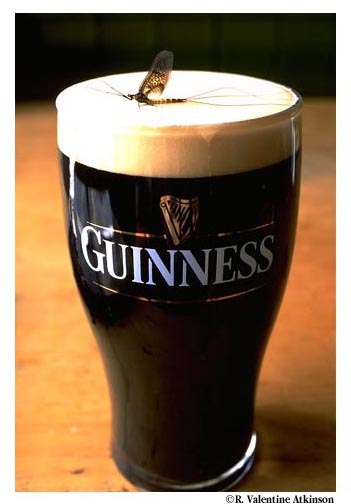| a mayfly with a drinking problem |

|
| Parachute Adams |

|
| always a good choice |
| Pale Morning Dun |

|
MATCHING THE HATCH
So you've decided to give the Bow River a "go" and now comes
the hard part. What flies should I take. Well, this isn't an easy choice, particularly if you are a dry fly afficienado,
because like any great trout stream, the Bow has its own complex blend of hatches and, depending on water temperature and
time of the year, many could be emerging at once. However, there are some "tried and true" flies, both dry and of the
nymph variety, that do produce big fish every year on the Bow. We'll try to give you some ideas here.
For starters, a general chart of western Canadian hatches
might be a good reference point:
However, the Bow has
its own specific hatches and this link gives you a nice overview:
(yep, it's a long bugger, but it's an excellent overview
of the Bow's major hatches)
| Blue Wing Olive |

|
| Can be a big producer on the Bow |
A WORD (OR TWO) ABOUT THE SAN JUAN WORM
Fly fishermen often get very detailed and complicated
when analyzing the hatches, the variations of their flies, (either dry or wet), and what to use when. Often, we
can ignore the obvious in our frantic search for the perfect fly. On the Bow, the "perfect fly" on many days is
often not considered a fly by many fly fishermen.
No matter how you view the famous San Juan Worm, there
is no debating it's effectiveness on the Bow River. Local guide/guru Jim McLennan estimates that the San Juan worm outproduces
all other fly patterns on the Bow every year and my experience with this fly/hook supports his thesis. (Jim argues
that it's usually because it's the easiest pattern for inexperienced fly fishermen to have success with, something we
call a "no-brainer")
Our experience is that, at some point, most days on
the Bow, the San Juan worm is a tremendous pattern when presented properly and I have landed some truly magnificent
trout, both Browns and Rainbows with it. Put it in your toolbox, fish it dead drift and be ready!
|

